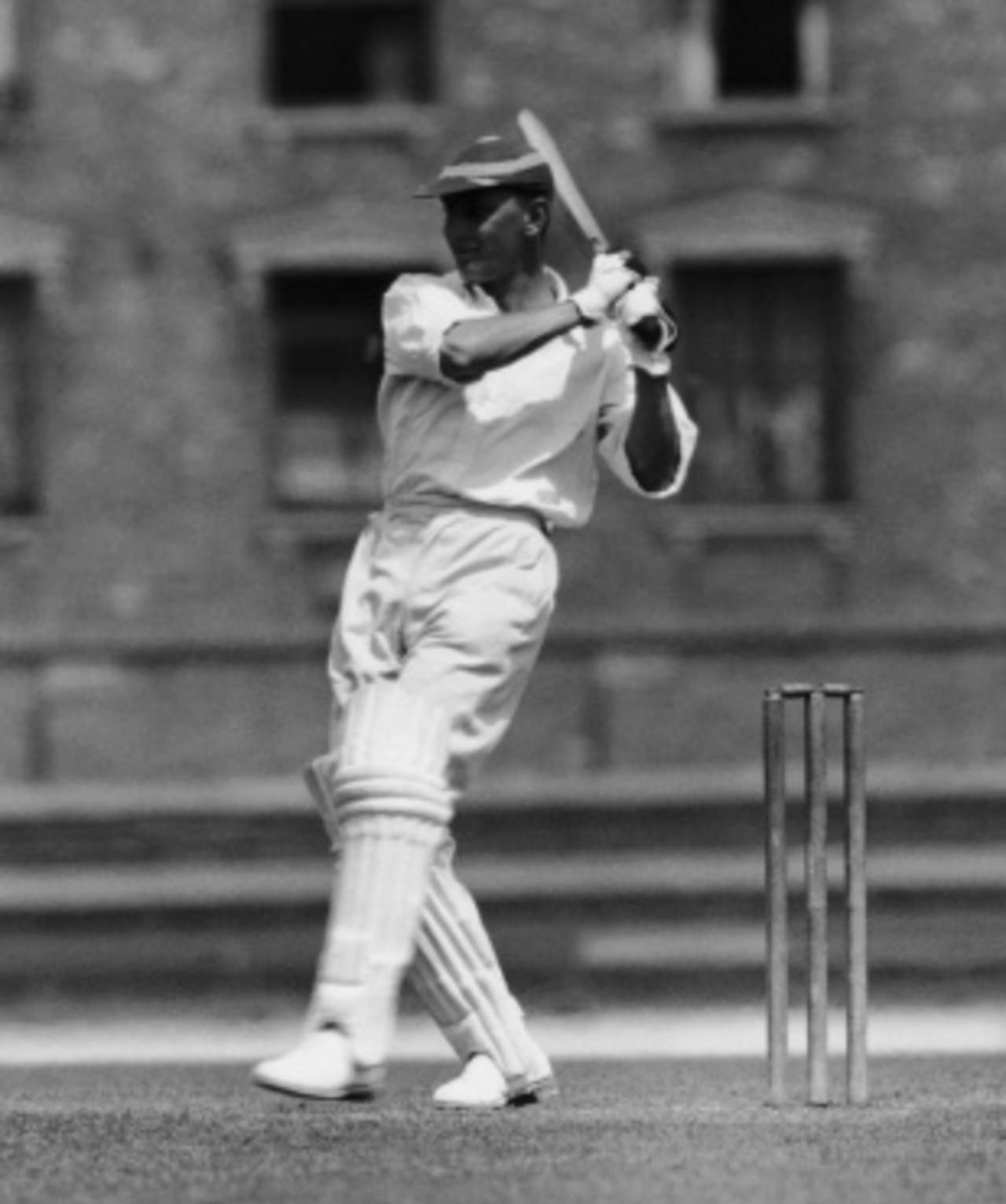Made in India
England Test players who were born 4000 miles away

Mandy Mitchell-Innes batting for Oxford while a Test he was supposed to be playing in was underway at Lord's • Getty Images
Born in Ootacamund, not far from Bangalore, Cowdrey was given the propitious initials "MCC" by his cricket-loving father, whose first act on seeing the baby was to put him down for membership at Lord's. A batsman with textbook technique, Cowdrey became the first man to appear in 100 Tests - he scored a hundred in his 100th appearance - and made no fewer than six Ashes tours of Australia.
Forming a well-rounded opening partnership with Cowdrey, the hard-hitting Warwickshire batsman "Tubs" Jameson was born in Bombay - and was sounded out about playing for India before he made his Test debut against them, in 1971. He won four caps in all, rather unluckily being run out in three of his eight innings. Jameson later became an umpire, then a genial assistant secretary at Lord's.
One of the shining stars of cricket's Golden Age (before the First World War), KS Ranjitsinhji - later the Jam Saheb of Nawanagar - entranced crowds with his stylish play and, well, his sheer style: flicking the ball casually to leg with a dismissive wave of wrists adorned by billowing silk shirtsleeves. The fact that he was a prince added to the mystique too. The first Indian cricketing superstar, he never played first-class cricket at home, although he gave his name to the country's premier domestic trophy.
Born in Madras, but fiercely English on the field, Essex's Hussain played 96 Tests for England, captaining them in 45. He retired in 2004, and made an almost seamless transition to the commentary box, where he soon became one of the most acute observers of what's goin' off out there.
Ranji's nephew, and almost as stylish a batsman, KS Duleepsinhji also played for Sussex and England. Persistent illness confined him to eight full seasons of first-class cricket, during which he averaged a whisker under 50 (and 58 in a dozen Tests).
Born in Bombay, where his father taught at the Government Law School, England's most uncompromising captain would probably insist on leading this team too. He might have been an amateur, but he batted like a professional, with great determination and few flourishes: he averaged nearly 47 over a long first-class career, and bettered that in Tests, with 48. And, just in case you've forgotten, Jardine was the man who dreamed up - and successfully implemented - Bodyline.
Norman Mitchell-Innes, born in Calcutta, played one Test for England in 1935, after some fine performances for Oxford University... and then pulled out of the next Test, pleading bad hay fever. His hopes of winning another cap receded when, feeling a bit better, he scored a century for Oxford at The Oval while the Test he was supposed to be playing in was going on across the river at Lord's.
A bit low in the order, perhaps, but he'd need to do a lot of bowling! Woolmer, born in Kanpur, modelled his batting on Colin Cowdrey's, and succeeded well enough to score three centuries - all against Australia - in his 19 Tests. Woolmer became a popular and hard-working coach, and the entire cricket world mourned when he died, aged only 58, during the 2007 World Cup.
Our wicketkeeper, the bespectacled amateur Mr RA Young, played two Tests during the 1907-08 Ashes tour. A fine batsman, he once scored 220 for Sussex, and also made 150 for Cambridge in the 1906 Varsity match. Young later ran the cricket at Eton for more than 30 years.
A canny slow left-armer, Patel was a consistent performer for Kent from 1989 to 2007, taking more than 600 first-class wickets. He was probably unlucky not to win more than two Test caps, both against his native India (he was born in Bombay) in 1996.

Born in Simla, the Surrey fast-medium bowler Jackman seemed to have missed out on Test cricket before he was called up, at the age of 35, as a replacement for the 1980-81 West Indian tour after a fine domestic season. The long wait wasn't quite over, though, as Jackman had no sooner joined the team than he was deported from Guyana because of his strong connections with South Africa (he had played a lot there, and his wife was South African). The rest of the England team joined him, and the tour resumed only after high-level talks. "Jackers" made the first of his four Test appearances in the next Test, in Bridgetown, starting well by removing the stellar opening pair of Gordon Greenidge and Desmond Haynes. These days Jackman is a jovial TV commentator, based in South Africa.
The senior Nawab of Pataudi played three Tests for England - scoring a century in his first, during the Bodyline tour - and three for India as captain in England in 1946. Neville Tufnell (born Simla) kept wicket in one Test in South Africa in 1910-11. Errol Holmes, born in Calcutta, was a fine batsman for Surrey - and the man who replaced Mandy Mitchell-Innes when he dropped out of a Test with hay fever (see above). The Agra-born Gloucestershire batsman George Emmett drew the short straw when, in 1948, he replaced Len Hutton (dropped for a supposed lack of resolve against the fast bowlers) for the third Test against Don Bradman's Invincibles: Emmett was dismissed twice by Ray Lindwall, for 10 and 0, and back came Hutton. Major Teddy Wynyard (born Saharanpur in Uttar Pradesh) was an upright amateur batsman who won three Test caps between 1896 and 1906, but we'd better keep him on the sidelines here, as he was once said not to think much of Ranji.
Steven Lynch is the editor of the Wisden Guide to International Cricket 2012.